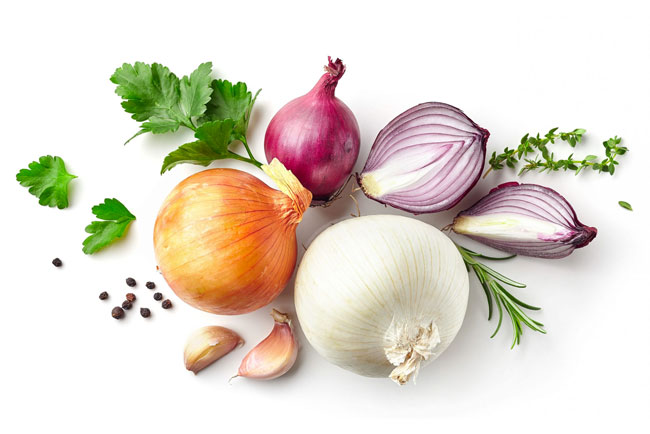You may think that the old adage ‘you are what you eat’ is a myth, but science and research show that what we eat has a profound effect on our gut microbiome. And this in turn plays a big role in our health and can even affect our mood and behaviour.
One area that can be confusing is prebiotics vs probiotics and their effects on gut health. It is increasingly difficult to navigate through the wealth of information on the internet and challenging to separate the wood from the trees! So, here’s hoping to debunk some of the myths and confusion.
Despite the word’s prebiotic and probiotic sounding similar, they are fundamentally different and have very different roles in gut health. Let’s delve a bit deeper and understand more about the roles they play.
What we feed your microbiome can have a big impact on its health and the keeping it healthy means we will be healthier too. To ensure a healthy microbiome, we need to make sure the balance of bacteria in our gut is maintained and nourished. This is where a healthy balanced diet comes in along with prebiotics and probiotics.
Prebiotics
The concept of prebiotics was first introduced by Gibson and Roberfroid1 in 1995. Prebiotics were described as ‘non-ingestible food ingredients that beneficially affect the host by selectively stimulating the growth and/or activity of one or a limited number of bacterial species already in resident in the colon and thus attempts to improve host health’. Since then there have been several other definitions published in scientific literature, however the most accepted is that from a review co-authored by the working group of the International Scientific Association of Prebiotics and Probiotics published in 20082. It defines a dietary prebiotic as ‘a selectively fermented ingredient that results in specific changes in the composition and/or activity of the gastrointestinal microbiota, thus conferring benefit (s) upon host health’.
So, what characteristics does a prebiotic need to have to meet the above definition:
- Resistant to stomach acid
- Not degraded by enzymes in the gastrointestinal tract
- Not be absorbed in the gastrointestinal tract
- Can be fermented by gut micro-organisms resulting in a beneficial change in the large intestine gut microbiome
Most prebiotics are non-digestible carbohydrates known as fructans (such as fructo-oligosaccharides and inulin) and galactans (including galacto-oligosaccharides). However, polyphenols and polyunsaturated fatty acids may fit the criteria but further evidence is needed (Gibson et al 20172).]
These carbohydrates are found in many fruits and vegetables so occur naturally however, there are also prebiotic supplements available on the market.

*This is not an exhaustive list
So simply put, prebiotics are used in the gut to feed and increase populations of good bacteria, to help with digestion and to also enhance the production of certain vitamins.
Probiotics
The origin of the word probiotic is from the Latin, meaning ‘for life’, however there are also roots in Greek, from bios meaning ‘fit for life’ or ‘lively’.
Probiotics have been part of our life for thousands of years in the form of fermented foods such as beer, wine, yoghurt and cheese. As long ago as Roman times, these foods were known to be healthy – Pliny the Elder, a Roman naturalist would often prescribe fermented milk to help with intestinal problems.
It wasn’t until the early 1900’s when Elie Metchnikoff’s research concluded that bacteria found in ‘soured’ milk prolonged the lives of rural Bulgarian people that the first modern prebiotic was identified3. Henri Tissier at the Pasteur Institute also made another important discovery around the same time. He isolated Bifidobacterium from the gut flora of babies that were breast-fed and observed these bacteria could lessen diarrhoea4.
The actual word ‘probiotic’ was introduced in 1953 by a German scientist Kollath to designate ‘active substances that are essential for a healthy development of life’. Whilst in 1992, Fuller defined probiotics as ‘a live microbial food supplement which beneficially affects the host animal by improving its intestinal microbial balance’5. Today, it is the World Health Organizations definition issued in 2001 that is more widely accepted ‘live micro-organisms which when administered in adequate amounts confer a beneficial health effect on the host’.
So, what characteristics does a probiotic need to have to meet the above definition:
- The micro-organisms have to live
- They need to be present in large numbers – typically 107 – 1014 colony forming units/day
- They need to have evidence of a health benefit
The scientific evidence for the health benefits of probiotic use in healthy individuals is currently quite weak however researchers have documented some benefits for people with certain conditions.
It is important to recognise that different probiotic strains of micro-organism do different thing and that everyone has a different gut microbiota. It is therefore not likely that there will ever be a probiotic that will suit everyone. Taking probiotics probably needs a personalised approach which takes account of your symptoms, any evidence of probiotic benefit for those symptoms, which micro-organism has shown a benefit and what the effective dose is.
Hopefully, you know have a better understanding of the difference between prebiotics and probiotics enabling you to make the best choice for your gut health.
References
-
Gibson, G. and Roberfroid, R. Dietary Modulation of the Human Colonic Microbiota: Introducing the Concept of Prebiotics. The Journal of Nutrition, 125, 1401-1412 (1995).
-
Gibson, G., Hutkins, R., Sanders, M. et al. Expert consensus document: The International Scientific Association of Probiotics and Prebiotics (ISAPP) consensus statement on the definition and scope fo prebiotics. Nat Rev Gastroenterol Hepatol 14, 491- 502 (2017).
-
E. Metchnikoff. Optimistic studies New York: Putmanys Sons, 161 – 183. (1908)
-
H. Tissier. CR. Soc Biol, 60 39 (1906)
-
Fuller, R. A review: Probiotics in man and animals. Journal of Applied Bacteriology, 66, 365- 378 (1989)

